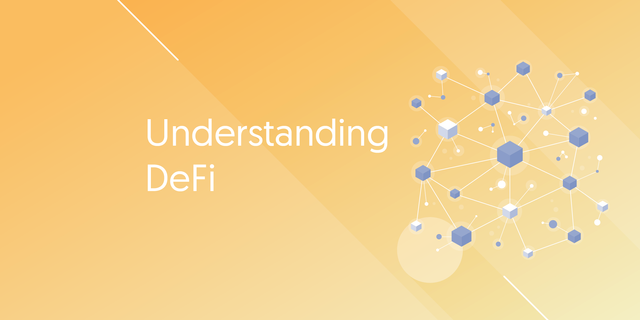A simple guide to understanding DeFi

In a recent interview with Vitalik Buterin, creator of the Ethereum blockchain, he was asked what he thought about the almost explosive rise of decentralised finance, (DeFi). He answered that it makes sense that the first real application of blockchain technology is around finance and that he is happy to see DeFi expand beyond trading, transactions, and payments, to include insurance, smart contracts, lending and so forth.
Finance is a logical first area of activity for blockchain to disrupt because, as Vitalik points out, it is where centralised structures are “the most terrible”. Sending an email from one country to another is trivial, but sending money across borders still takes a tremendous amount of effort, whereas with blockchain technology such transactions can be almost instantaneous and at low cost.
He also mentioned that DeFi is not quite there yet and that we have to remember that smart contracts are not yet free from bugs and that some of the systems currently being built are not as decentralised as one would hope, but assuming these things improve over time, DeFi is a very promising field of endeavor.
So what is DeFi exactly, where is it heading, and why is it important? Let’s dive right in.
What is DeFi?
Put simply, DeFi offers a new way of engaging finance. Instead of relying on conventional banks, DeFi is about taking savings, loans, trading, insurance and more into your own hands. Literally, DeFi opens up the world of finance to anyone with a smartphone in hand and an internet connection.
Smart contract platforms, such as Ethereum, are key to this. Smart contracts can best be described as programmes where the execution of pre-agreed activities happens automatically once certain conditions are met. Since Ethereum, blockchain technology is no longer just about transacting value and data and storing information on a distributed ledger: it’s about building sophisticated decentralised apps (dapps) and really bringing the benefits of decentralisation to the mainstream.
For every product and service that exists in the world of traditional finance that is accessible for a select group of people, there is a decentralised version that is accessible to everyone. DeFi apps allow users to create stablecoins, lend money and earn interest, take out a loan, trade, take positions on prediction markets, and much more.
Essentially, day to day operations of DeFi dapps are not managed by a centralised institution. Instead, these dapps run themselves based on their code. In most cases, the code upon which they run is open source, so anyone can perform an audit or help detect potential bugs. By their nature, dapps are global in their reach - depending on local regulations - and are essentially accessible to anyone with a smartphone and an internet connection.
As we mentioned recently, DeFi is among the fastest-growing sectors in crypto, with over $800 million currently locked into smart contracts.

To listen to the audio version of this article click on the play image.

Brought to you by @tts. If you find it useful please consider upvoting this reply.